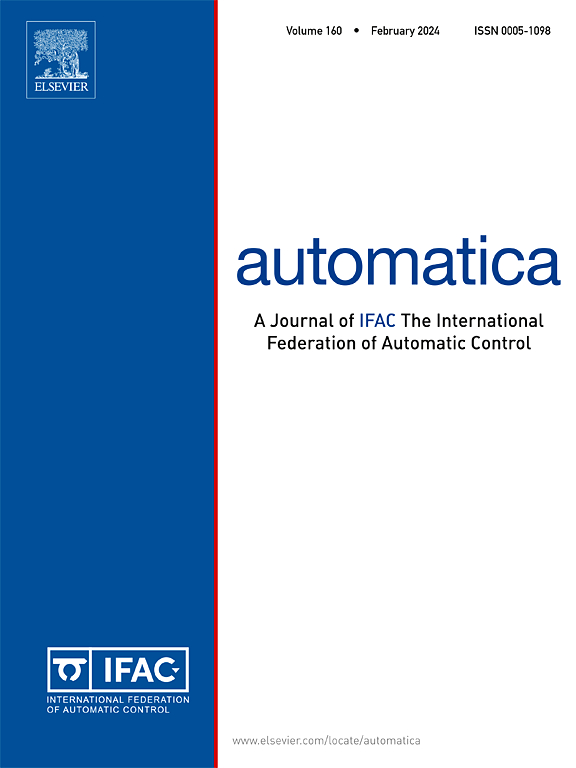Nonlinear impulsive control for stability of dynamical systems
IF 4.8
2区 计算机科学
Q1 AUTOMATION & CONTROL SYSTEMS
引用次数: 0
Abstract
This paper studies the stability problems for dynamical systems via nonlinear impulsive control, where the nonlinearity of the impulses is fully considered. We provide a set of Lyapunov-based sufficient conditions for local asymptotic stability (LAS) and the estimation of the domain of attraction, where a relationship among nonlinearity, the system structure, and impulse time sequences is established. To show the effects of nonlinearity on system performance, a novel finite-time contractive stability (FTCS) concept that characterizes the boundedness and finite-time contractive property of the system on the infinite domain is introduced. It shows that the nonlinearity is conducive to the stability of the system under certain conditions. Moreover, it can lead to a faster convergence speed compared to the linear case. Finally, two illustrative examples are given to verify the validity of the theoretical results.
动态系统稳定性的非线性脉冲控制
本文利用非线性脉冲控制研究动力系统的稳定性问题,充分考虑了脉冲的非线性。我们提供了一组基于lyapunov的局部渐近稳定(LAS)和吸引域估计的充分条件,其中建立了非线性、系统结构和脉冲时间序列之间的关系。为了说明非线性对系统性能的影响,引入了一个新的有限时间收缩稳定性(FTCS)概念,该概念表征了系统在无限域上的有界性和有限时间收缩性。结果表明,非线性有利于系统在一定条件下的稳定性。此外,与线性情况相比,它可以导致更快的收敛速度。最后,通过两个实例验证了理论结果的有效性。
本文章由计算机程序翻译,如有差异,请以英文原文为准。
求助全文
约1分钟内获得全文
求助全文
来源期刊

Automatica
工程技术-工程:电子与电气
CiteScore
10.70
自引率
7.80%
发文量
617
审稿时长
5 months
期刊介绍:
Automatica is a leading archival publication in the field of systems and control. The field encompasses today a broad set of areas and topics, and is thriving not only within itself but also in terms of its impact on other fields, such as communications, computers, biology, energy and economics. Since its inception in 1963, Automatica has kept abreast with the evolution of the field over the years, and has emerged as a leading publication driving the trends in the field.
After being founded in 1963, Automatica became a journal of the International Federation of Automatic Control (IFAC) in 1969. It features a characteristic blend of theoretical and applied papers of archival, lasting value, reporting cutting edge research results by authors across the globe. It features articles in distinct categories, including regular, brief and survey papers, technical communiqués, correspondence items, as well as reviews on published books of interest to the readership. It occasionally publishes special issues on emerging new topics or established mature topics of interest to a broad audience.
Automatica solicits original high-quality contributions in all the categories listed above, and in all areas of systems and control interpreted in a broad sense and evolving constantly. They may be submitted directly to a subject editor or to the Editor-in-Chief if not sure about the subject area. Editorial procedures in place assure careful, fair, and prompt handling of all submitted articles. Accepted papers appear in the journal in the shortest time feasible given production time constraints.
 求助内容:
求助内容: 应助结果提醒方式:
应助结果提醒方式:


